Having gone through your kayak checklist, you decided which route to take, and was about to fill others in on what time you will arrive but unfortunately you realize you don’t know how long it is going to take.
It’s true that you know how far you have to go, but what’s the time required for kayaking a mile anyway? It seems like an easy question to answer, but it’s not; a lot of variables are involved.
How Long Does It Take To Kayak a Mile?
Taking a rough estimate and a general guideline is the only way to answer this question: under ideal conditions, a mile should take an average paddler somewhere between 20 and 30 minutes to complete.
Again, it is determined by the paddler’s skill and strength, weather conditions, and water. The kayak’s design also needs to be considered.
Kayak Speed Factors
Experience & physical ability of the paddler
You can propel your kayak across the water more quickly if you have the right form and technique, plus experience and physical abilities.
It is impossible for beginner kayakers to compete with experienced kayakers without building their kayaking muscles, increasing endurance, and improving stroke efficiency.
Different Types of kayak
Whitewater Kayaks
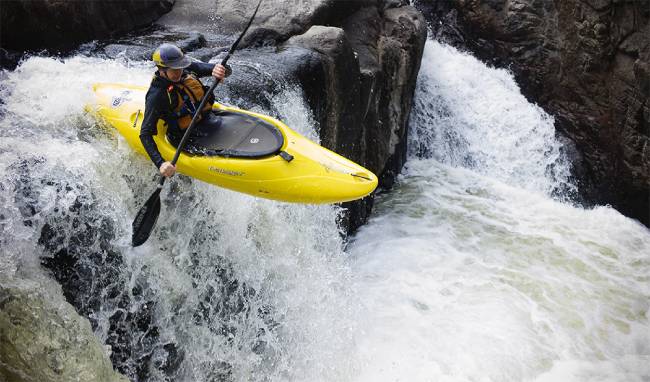
Their speed is based on the flow of water, so they’re slow on calm water
Sea Kayaks
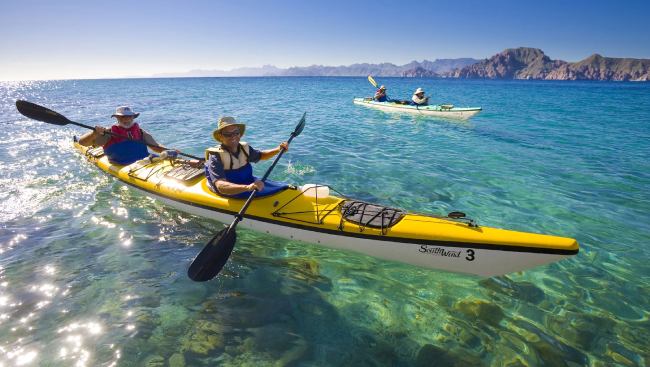
With widths that range from 23″ to 24″, these kayaks are suited to covering large distances quickly
Touring Kayaks

These are shorter than recreational kayaks, averaging 15? in length with a 26?? beam on average
Thin-beamed race kayaks

Very long, very fast, and with a beam of 20″ or less
Recreational Sit-inside Kayaks
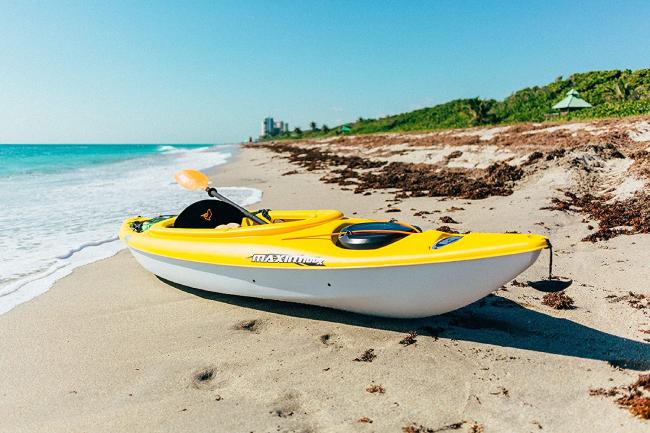
They are typically 10 feet long and have a beam of 28 inches
Fishing Kayaks
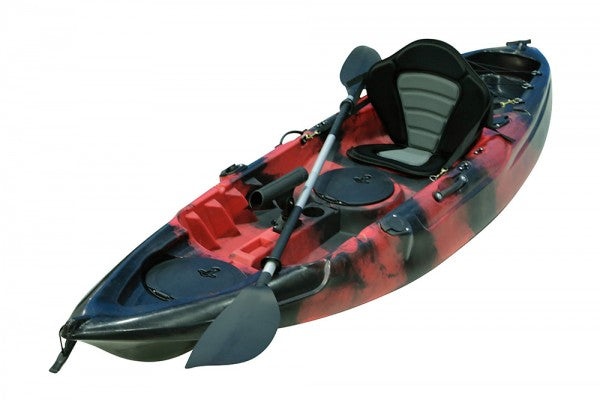
Slow but stable, not meant for speeding
Recreational Sit-on-top Kayaks –
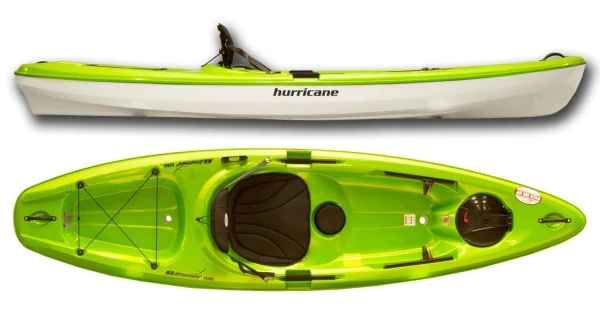
Faster and more stable than those you sit-inside kayaks.
Hull material and speed
Plastic Kayak Speed
Kayaks with one-piece plastic hulls, and two-piece thermoplastic hulls are the slowest. Moreover, plastic hulls can pick up blemishes, scrapes, and gouges that further decrease hull speed.
Composite Kayak Speed
Kayaks with composite hulls perform about .5 knots better than plastic kayaks (polyethylene) with a polyurethane hull. The price however is higher.
Kevlar kayak speed
It’s not cheap to buy one of these kayaks. However, a kevlar kayak will put you at an advantage, since you’ll have one of the lightest kayaks around.
Unlike other kayak materials, Kevlar is not only lighter, it also offers eight times the impact strength of ABS.
Wood kayak speed
Kayaks made of wood aren’t only efficient but also fast when paddled by an expert. As a result, they’re an excellent choice for long-distance trips.
Wooden kayaks are coated with resin and fibreglass to not only keep them lightweight, but also to make them durable and secure.
Type of Paddle

Low-angle paddles
Long, narrow paddles designed for low-angle paddling are more efficient at cutting through water, making paddling less tiring.
Ideally, they should be used with larger, recreational kayaks to allow for relaxing paddling.
High-angle paddles
Paddles with a high angle, which hold and capture water, provide faster propulsion and more aggressive strokes. For narrower kayaks built for speed, this type of paddle is ideal.
Kayak paddle length
It is important to choose a paddle according to your height, width of your boat, your shoulders, and your preferences to maximize your efficiency.
You can also paddle for longer without getting tired by using a lightweight composite or fiberglass paddle
Current speed
If you’re going to kayak down a river, you should consider the river’s flow speed. If you paddle normally 2.5 knots, you’ll be traveling at 5 knots if the river is flowing at 2.5 knots.
This is faster than a person can normally paddle a kayak. The distance and time of your downriver expedition depends on this.
Alternatively, if you’re paddling upstream at a 2.5 knot current, consider yourself paddling in the one spot.
Tide speed
Time to reach a mile is also heavily influenced by tide speed. If the water is moving faster, it may take longer for a mile to be reached. Additionally, tides can reduce travel time.
Obstacles in the water
Additionally, your kayak speed could be slowed by encountering, and navigating around, several obstacles, such as; hanging branches, floating trash, and other kayaks.
Unfamiliar water
You may be slowed down by unfamiliar water. You will have an easier time navigating familiar water. You know the obstacles in your way and how fast the water flows. Most likely you won’t need to use a map.
The weight you’re carrying
The time it takes to paddle one mile depends on how much you are carrying, how much gear you have, and how many people you have with you.
As a result, you are slowed down no matter what you do.
How to Measure the Average Kayaking Speed?
In theory, kayaks can travel at their maximum speed based on the length of their hulls. It is calculated by multiplying the square root of the kayak’s length by 4.5 to get the value (in km/h).
A maximum speed of 9 km/h is therefore possible at a waterline of 4 metres. In a kayak measuring 5.5 metres, speeds can reach 10.55 km/h. Kayaks with four metres have a limited hull speed.
Only seasoned kayakers can attain this speed. For a kayak measuring 5.5 metres in length, only a couple of experienced and well-trained kayakers can gain the speed of 10.55 km/h.

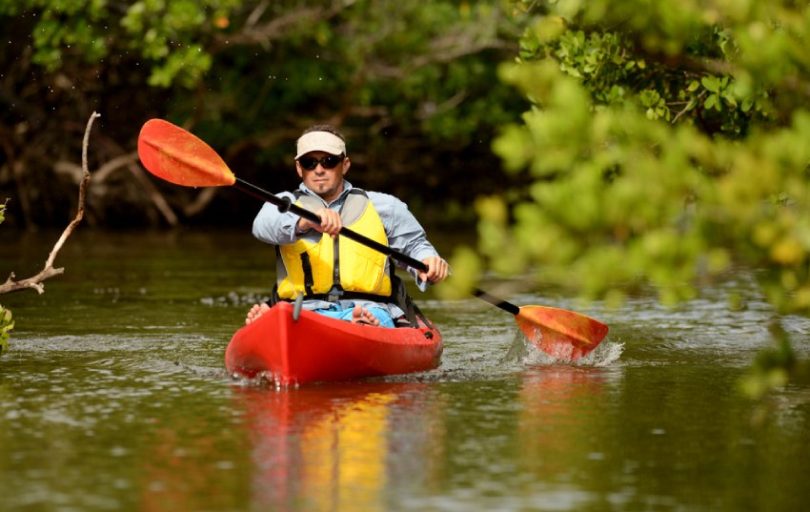


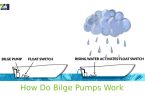



Leave a Comment